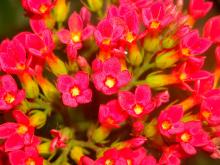When you know what to plant next to this or...
-
Images of Kalanchoe plant and pictures
Kalanchoe Plant Description and Features
Kalanchoe is a dark green succulent perennial plant with tooth-like leaves, umbrella shaped inflorescences and tiny, around 2.5 million per ounce seeds. It is a vertically growing plant with branches and ramifications. The flowering period lasts very long compared to other houseplants. Bright red, pink or yellow blossoms do not fade for weeks.
In total, there are about 200 species of Kalanchoe, but Kalanchoe pinnate in particular is used in medical practice. Under natural conditions, Kalanchoe grows in South America and Southeast Asia and reaches up to 1.5 meters in height; nonetheless, it can be often seen as a houseplant, thanks to its medical and decorative properties.
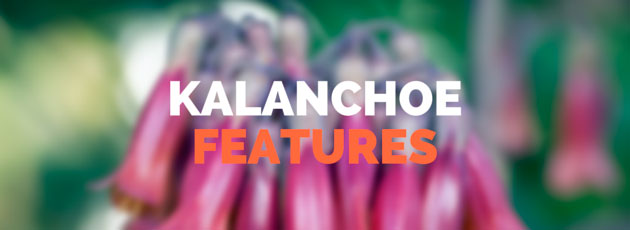
The terrestrial part of the plant is taken in order to treat illnesses when its stems reach 40-60 cm and the lower part of the stem becomes dense. Kalanchoe pinnate has anti-inflammatory, antiseptic, aphrodisiac and tonic effect, and most importantly, it is a powerful stimulant of tissue regeneration, i.e. it promotes rapid cleansing and healing of the wounds and ulcers. Kalanchoe is not too toxic and reduces inflammation. Particularly good results are obtained when treating fractures and burns.
There is a belief that Kalanchoe brings good luck to everyone who grows it at home. Most likely, this opinion is based on the healing qualities of the plant. The plant has anti-inflammatory, wound healing, hemostatic effect. Juice from the leaves is used against many skin diseases. Kalanchoe is successfully used not only in medicine but also in cosmetics as an excellent anti-aging product.
In addition to its medicinal properties, many species have excellent decorative qualities. Besides that taking care for Kalanchoe does not require much effort and you will be pleased to see it bloom not just one or two months a year.
✔ We Released The Kalanchoe HandBook
CLICK HERE TO LEARN MORE >>Buying Kalanchoe Plant. How to plant and when to transplant a Kalanchoe?
When buying Kalanchoe note the plants with flower buds, from which you can already see their future coloring. Although different types of Kalanchoe look differently, they all have healing properties. There exist more than 200 species of Kalanchoe and only a few can be maintained at home.
Kalanchoe is usually grown as an indoor house plant because it does not tolerate low temperatures. It might fail to bloom when the pot becomes too small, which you can remedy by putting it to a larger pot. The best planting mix is 60% peat moss and 40% perlite.
You can check if your plants are ready for transplanting by giving them a tug.
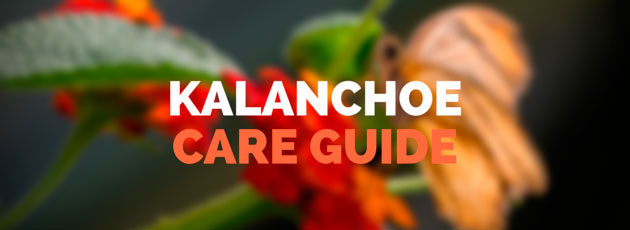
Kalanchoe Care and Growing Conditions
No matter what type of Kalanchoe you have purchased, the home care for all the species of this plant is about the same. After all, they all belong to the same family of Crassulaceae. All of these plants are the inhabitants of the tropic regions. They are adapted to staying in dry and high humidity conditions for extended periods of time. Kalanchoe leaves accumulate moisture, which can later be used for the plant’s survival. In addition, this plant does not have to be often fertilized and replancuttited. It can be said that this plant gives us more than we ask for.
These indoor plants (Kalanchoe also grows very well outdoors in its hardiness zone) are characterized by their resistance to various diseases and pests. Besides, even when the plant began to rot, it can be divided into cuttings and planted. Avoid watering the kalanchoe cutting for at least 1 week. Nevertheless, regardless of unpretentiousness of this plant, it is still worth remembering how to maintain Kalanchoe at home.
How to grow and how to care for Kalanchoe plants, including the popular K. blossfeldiana. Here are tips on cultivation, propagation and light.
Kalanchoe images appeal can lead anyone to attempt its cultivation. Who wouldn’t be conquered by the pictures of plants with charming umbrella shaped inflorescences?
Lighting
Almost any corner of the house if there is a little sunlight is suitable for Kalanchoe. It grows well in partial shade and in diffused sunlight. If you expose the plant to direct sunlight, its leaves will only become slightly reddish. Eastern and western windows are ideally suited for Kalanchoe as the light is less intense.
Kalanchoe does not like humid air, although, spraying is allowed during high temperatures. In order to maintain the plant’s appearance, wipe the leaves with a moisturized piece of cloth.
All of the Kalanchoe plants are succulents, which means that they tend to accumulate water in leaves and stems and regulate the moisture reserves. Thus, a long period of water absence will not be critical for them. For example, you can abundantly water the plant, then put it into a dark cool corner and leave it there for a month without any special caring for Kalanchoe.
Fertilization
Kalanchoe should be occasionally fertilized, approximately once a month. Any fertilizer that is used for succulents will also be suitable for your Kalanchoe. The blossoming species are best to fertilize with a complex fertilizer, otherwise, the plant will not bloom. You need to use only half of the dose indicated on the package of the fertilizer. In general, overabundance of fertilizers is harmful to Kalanchoe.
The fertilization of the plant should be carried out regularly during the flowering period. After blossoming faded racemes should be removed in order to ensure that the plant does not spend additional energy to maintain faded flowers and focuse on new buds. The plant has to be repotted every spring excluding the flowering period. It is better to use mixes for cacti or succulents as soil.

Kalanchoe Diseases and Pests
The improper care after any plant can cause its poor development and emergence of various diseases. In this case, the leaves are going to turn yellow and fall off; the blossoming period will be delayed and the plant itself will die. However, how can you define that your Kalanchoe does not like something and what diseases require urgent intervention? Let us consider the prior problems that may arise and ways to deal with them. If the plant’s leaves start falling off rapidly, this phenomenon means that it is not getting enough nutrition or the soil type is not a correct one. In this case it is necessary to fertilize the plant’s soil.
If the lower leaves started to fall off and the top ones became yellow, it is a sign that the flower is not getting enough light. In this case, relocate the plant closed to the light onto southern or eastern windowsills.
If despite the fact that the leaves look healthy and succulent the blossoming period is delayed, it means that there is an excess of fertilizer. You should stop fertilizing the plant for some time or just significantly reduce the dose. Curling leaves can be a sign of virus.
When black spots appear on the surface of the leaves, it means that parasitic fungi attacked your Kalanchoe. This can occur at extremely low temperatures and excessive watering when the soil does not have time to dry out. In this case you should change the soil and then remove the damaged leaves. The watering should be reduced, if the room is cool enough, the plant can be placed on windowsills above radiators.
If the room’s temperature conditions are not suitable for Kalanchoe, the plant might be affected by gray mold, which usually occurs in very wet and cold areas. You can move the plant to another location and the problem will disappear by itself.
Excessive heat can also harm the plant and prompt the appearance of mildew on the leaf surface.
Kalanchoe Blossfeldiana
Blossfeldiana is a plant with bare stems up to 30 cm in height, green ovate leaves and a red border around the edge. Flowers are collected in the apical umbellate inflorescence (up to one cm in diameter) and come in red, pink, yellow and orange colors.
Kalanchoe Thyrsiflora
Kalanchoe Thyrsiflora is a perennial plant (up to 60 cm in height) that grows on rocky slopes in South Africa. It has dense bluntly rounded silver-white obovate leaves up to 15 cm long and 7 cm wide. The lower leaves are more densely arranged than the ones located lower. The flowers are yellow; the corolla tube is inflated, 4-sided (up to 1.5 cm long). The plant’s petals are small, round and up to 0.5 cm long. Thyrsiflora blooms profusely during the April-May period. After flowering, the plant forms many buds that are widely used for plant propagation.
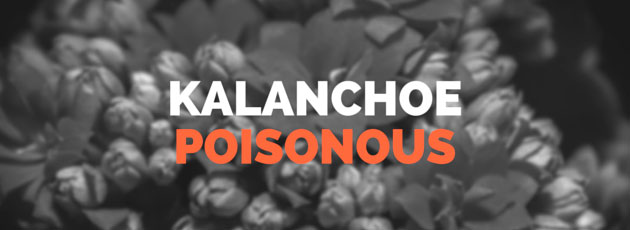
Is Kalanchoe Poisonous to Cats?
Kalanchoe is an extremely popular houseplant and is utterly dangerous for pets including cats.
Kalanchoe Pronunciation
The pronunciation of scientific names of plants can be downright confusing particularly because in some cases there is more than one proper pronunciation for the word. The word “Kalanchoe” is on the “Top 10 most difficult common plant names” list. There are four correct pronunciations: ka-luhn-KO-e, kuh-LANG-ko-e, KAL-uhn-cho, kuh-LAN-cho.
Care Instructions on How to Prune a Kalanchoe
For an indoor plant like Kalanchoe pruning can be simply pinching off blossoms and stems with your fingers to keep the shape of the plant.
✔ We Released The Kalanchoe HandBook
CLICK HERE TO LEARN MORE >>








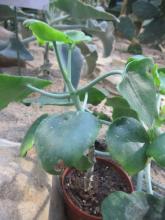 ,
, 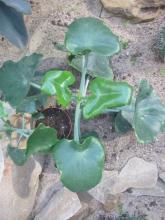 ,
, 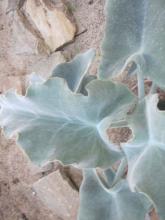 ,
, 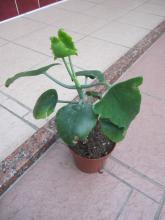 ,
, 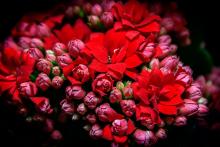 ,
, 